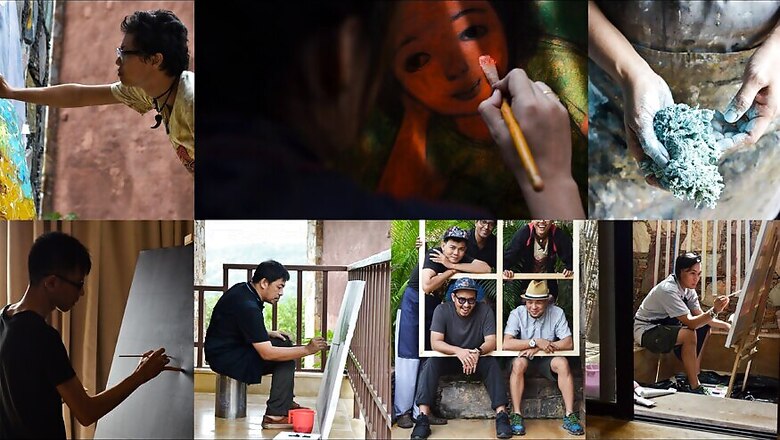
views
Tucked away in one of the rooms of The Ananta, Udaipur, three artists hailing from the Philippines, Indonesia and Brunei Darussalam were busy chatting when News18.com knocked on the door.
While explaining what art means to him, Khamarul Zaman Bin Pg Hj Tajuddin from Brunei lost his words and turned to Philippines’ Dennis Mallares Gonzales for help.
“It’s everything. You breathe art, you live with art, you dream art, you shit art and you eat art. Because art is life and also like a second wife,” pat came the reply.
“Sometimes I call him Filippino, and he refers to me as Brunei. I thought he is a Filippino! Look, we’re the same almost,” explained an elated Gonzales.
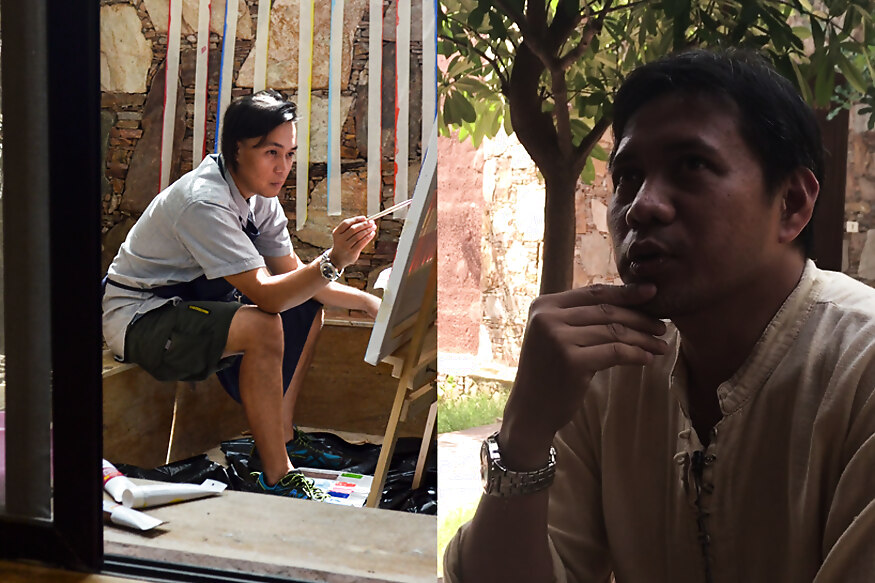
At the ongoing ASEAN-India artists’ camp organized by the Ministry of External Affairs, Government of India in collaboration with Seher, it’s not just art that’s being created, but also a gamut of new bonds and lifetime memories. And perhaps, that’s exactly what the camp intended to achieve.
Artists and painters from different ASEAN countries including Indonesia, Singapore, Philippines, Malaysia, Brunei, Thailand, Cambodia, Lao PDR, Myanmar and Vietnam besides India are living and creating art together which will be showcased in an exhibition in the capital sometime in January next year.
When asked about the funniest comment he has received on their work, Gonzales exclaimed, “Sometimes they said it was beautiful but sometimes, they said it’s like a horror movie.”
“When you talk to my art, I consider it FB which stands for F***ing Beautiful because it’s like positive and negative, yin and yang, heaven and hell,” he added.
Chan Sophorn of Cambodia, who was sharing the room with Lei Cai Xiang from Singapore, said, “I’m staying with a friend from Singapore and it’s so good. If we have any problem, we can share and discuss together.”
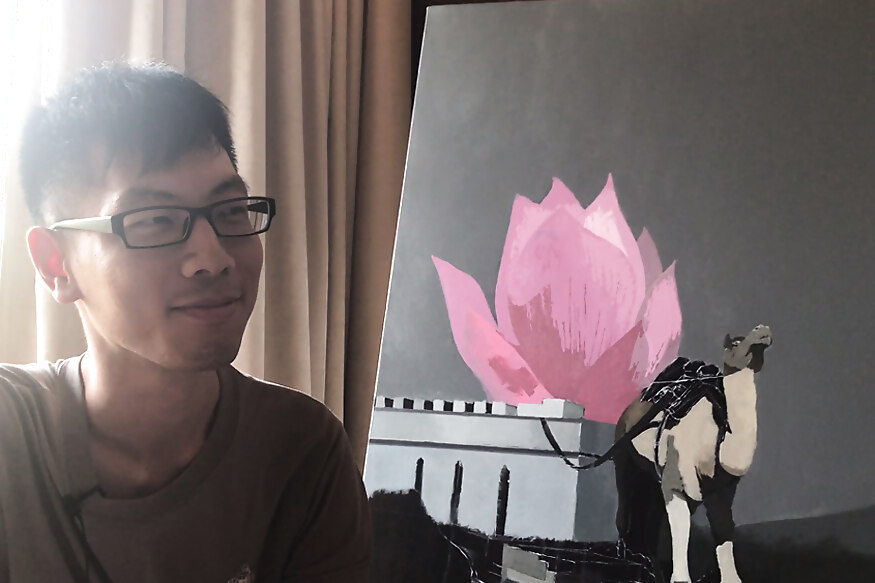
Xiang, who is on his first visit to India, believed that this camp will give him an opportunity to take inspiration from different cultures for his future artworks.
“As much as art can mean everything, it also means nothing. Because in essence, art is a subjective expression for everyone and the beauty of it is that all of us are working towards something we don’t know what it is, but we know it exists,” he shared.
Quite interestingly, the art, inspired from their roots and ideologies, sees a dash of each other’s influence too. Like, Malaysia’s Shahrul Hisham Bin Ahmad Tarmizi decided to complete his creation by writing “Made In India” in Hindi over it and the doll keychains that Sophorn helms boast a traditional Indian jewel touch.
“When I went to study, I realized I need to research about my traditional culture and I found about 5000 dresses for the Royals. Sometime later when I came, I saw the Indian jewels and then I saw that Apsara, the queen of my country, also uses the jewels just like Indians. So, my painting and decorations like for India and Cambodia to mix together for art,” explained Sophorn.
Drawing with a ball pen on the canvas was Tarmizi, who has been in the art industry for over 8 years now. “They say that I’m struggling to do my work. I don’t know. Maybe artists have some perception in seeing the work I’m doing now,” he shared.
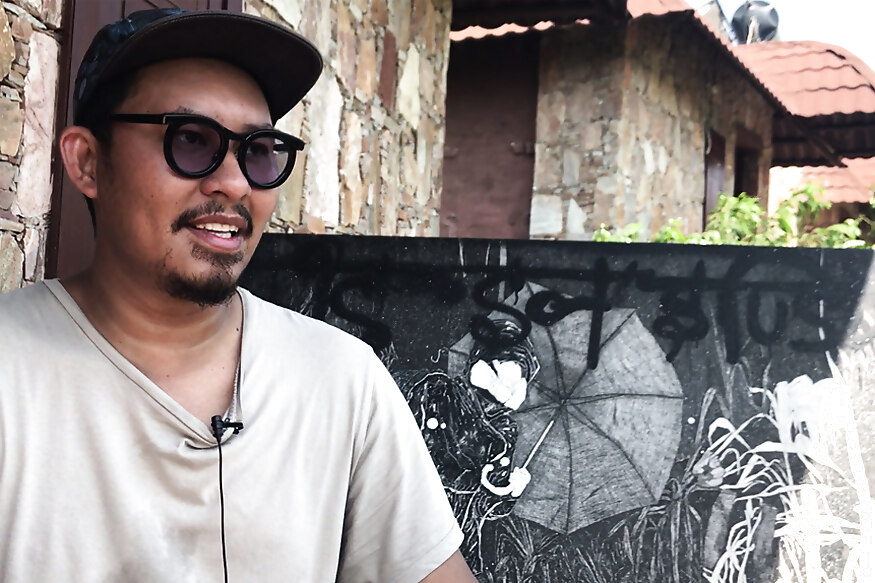
“Art means my life, what I stand for and what I’m struggling for. I don’t know what art specifically means to me but I live with it,” he added.
Nguyen Nghia Phuong, who was focused on adding final touches to his painting inside his room, shared that art was treated as something unusual in his country.
“In Vietnam, art is considered to be some unusual activity in society in general. Earlier we had troubles, but now we have more opportunities to think about and care about art.”

Laishram Meena Devi, one of the two female artists in the camp, opined that while a gender bias in the art industry exists in general, no one can guarantee the ups and downs. “Yes. But the bias keeps on changing. Because maybe it’s not easy being an artist and a female. Till college it’s fine, but after that it gets busy and they don’t get enough time to paint. They get married and have to look after kids and family.”
“Art is something like the sixth sense, something that goes beyond the normal people. For me, colour and canvas are my expressions,” she explained while highlighting that her painting is always soaked in the nostalgia of childhood.
A particularly jovial artist from Thailand, Kurae Naphaphong, articulated that art is difficult to explain. “If I have to explain about my artwork, then it’s not good. The person who comes to see my work has to use their vision, opinions to understand and have a perception to journey inside the art.”

Hailing from Bikaner, the veteran artist Mahaveer Swami, was delighted to be a part of this initiative. “I don’t know everyone but I’ve worked with a few of them. It feels good to be a part of this kalakumbh where everyone is working in their specific art styles and techniques.”
He added that while art has a lot of definitions, for him, it was important that all the world’s beauty can be depicted through the works of art.
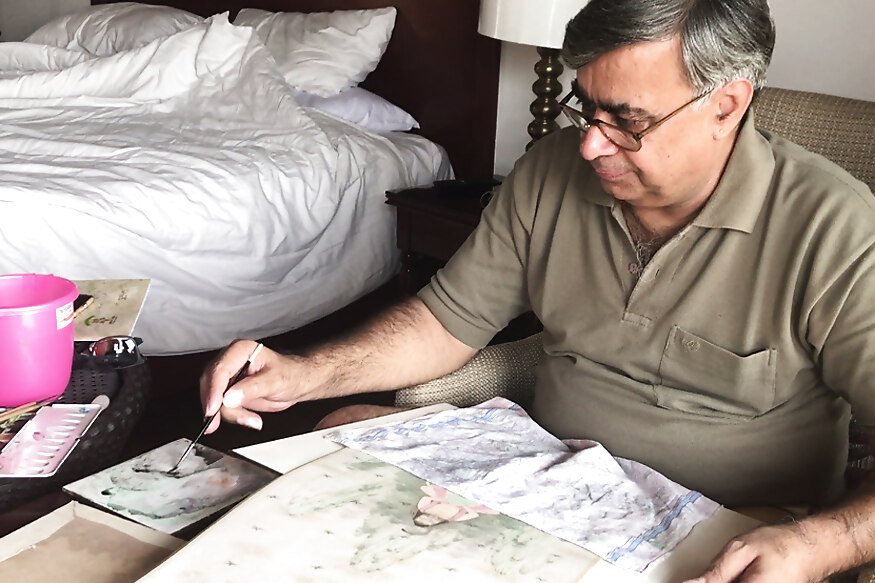
Iqro Akhmad Ibrahim Laily Subkhi, the gifted artist from Jakarta, Indonesia, explained that through his imaginative art, he tries to depict himself and all that goes on in his mind.
“It looks like a paper, a fish or a mermaid or something. For me, art is like a spirit. I just try to express myself and show my experiences. I hope that when people look at my artwork, it inspires them. When people look at my work, they get a little interested in my lines and brushes because my work is very imaginative, not realistic.”
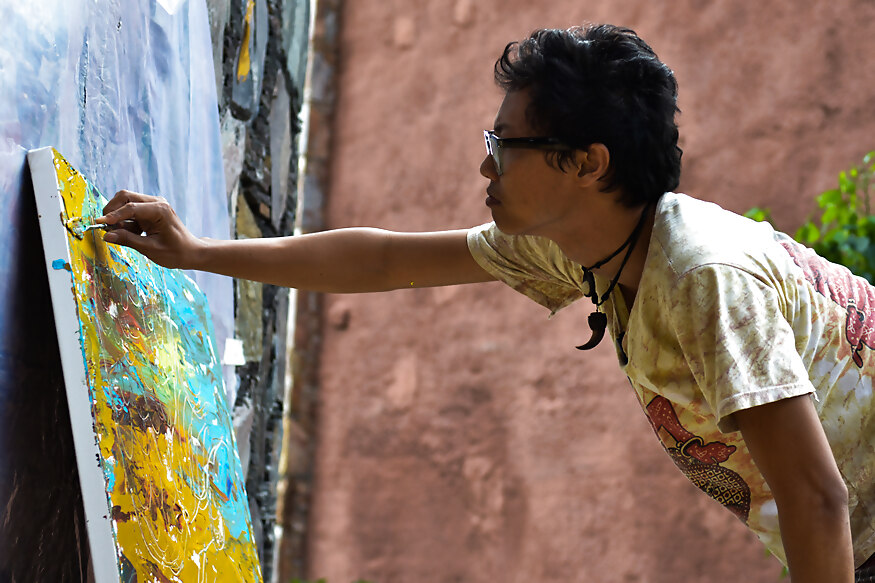
Not only is it an elation to see creative minds from different countries bonding over yoga and other activities besides art in the daytime and on drinks and dinner in the evening, but it's an immensely satisfying sight to witness new relations and strengthened cross-cultural ties blooming. While the culture and traditions might be poles apart for all 20 artists from India and ASEAN countries, the twinkle in their eyes when they talk about art and their inquisitiveness to know more about each other, not just in terms of work but otherwise, makes the ongoing camp one of the few peace-loving havens in the country right now.

















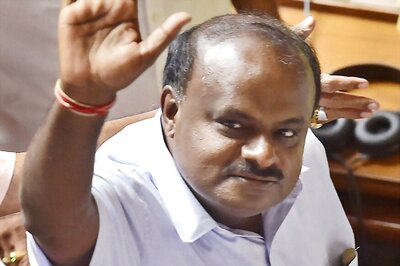
Comments
0 comment